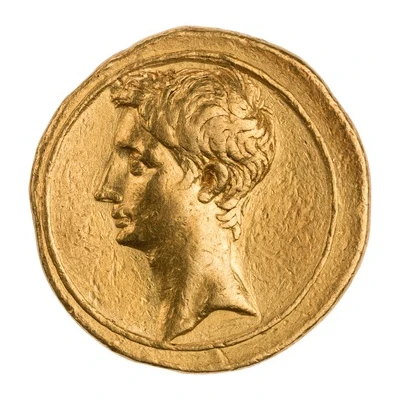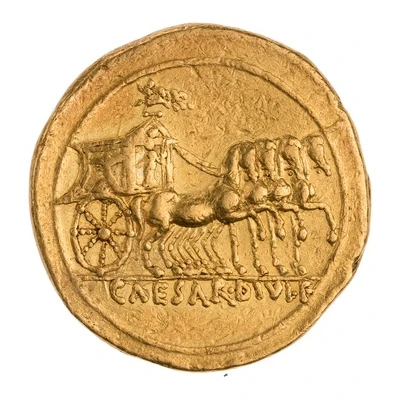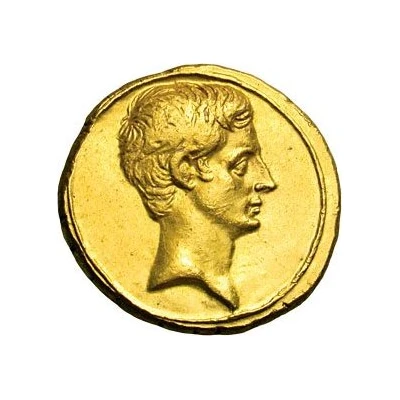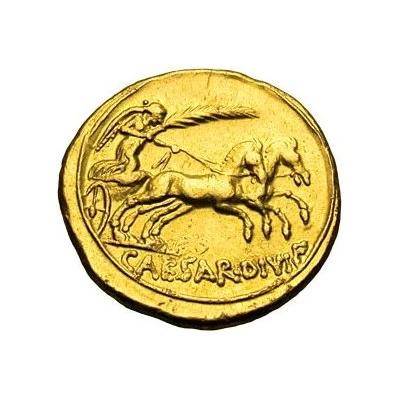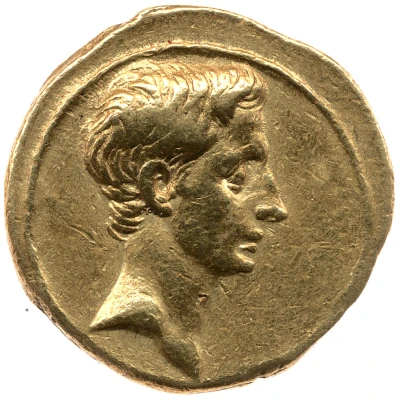
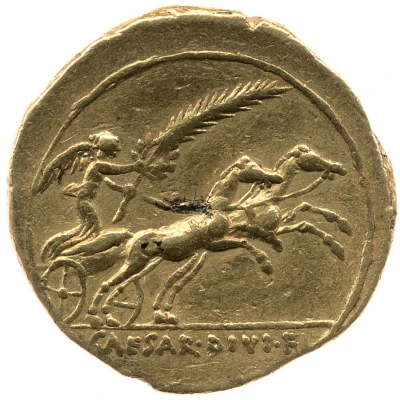

© Trustees of the British Museum
Aureus - Octavian CAESAR DIVI F; Victory 32 BC - 29 BC
| Gold | 7.9 g | 22 mm |
| Issuer | Rome › Roman Empire (27 BC - 395 AD) |
|---|---|
| Emperor | Augustus (Caius Octavius) (27 BC - 14 AD) |
| Type | Standard circulation coin |
| Years | 32 BC - 29 BC |
| Value | 1 Aureus = 25 Denarii |
| Currency | Denarius, Reform of Augustus (27 BC – AD 215) |
| Composition | Gold |
| Weight | 7.9 g |
| Diameter | 22 mm |
| Shape | Round (irregular) |
| Technique | Hammered |
| Orientation | Variable alignment ↺ |
| Demonetized | Yes |
| Updated | 2024-10-05 |
| Numista | N#247729 |
|---|---|
| Rarity index | 100% |
Reverse
Victory in biga, right, right hand holding wreath, left hand holding reins and palm.
Script: Latin
Lettering: CAESAR DIVI F
Translation:
Caesari Divi Filius.
Caesar, son of the divine.
Comment
Mass varies: 7.77–7.97 g;Diameter varies: 21–23 mm;
Source: Online Coins of the Roman Empire (OCRE)
Interesting fact
One interesting fact about the Aureus - Octavian (CAESAR DIVI F; Victory) coin is that it features an image of Victory on the reverse side, which was a common motif on Roman coins during this period. The image of Victory was meant to symbolize the power and dominance of the Roman Empire, and it was often depicted holding a wreath or a palm branch, as seen on this coin. The use of Victory as a symbol of Roman power and prosperity was a common theme in Roman art and architecture, and it continued to be used on coins and other artifacts throughout the Roman Empire's history.
